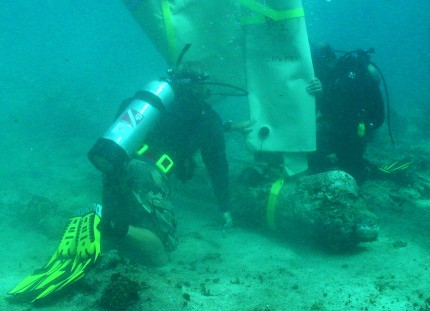A team of Cardiff University archaeologists working on an ancient industrial complex in Amarna, Egypt, have recreated a glassmaking furnace, proving for the first time that the ancient Egyptians had the means to create their own glass.
Up until now, archaeologists have thought Egyptians imported glass from the near east. This recreation shows that high-heat glass production from local sand was possible.

The whole site is neat.
The team have also discovered that the glassworks was part of an industrial complex which involved a number of other high temperature manufacturing processes. The site also contained a potter’s workshop and facilities for making blue pigment and faience – a material used in amulets and architectural inlays. The site was near one of the main temples at Amarna and may have been used to produce materials in state buildings.


 Four years before Pearl Harbor, no less. I’d never heard of this before, but
Four years before Pearl Harbor, no less. I’d never heard of this before, but